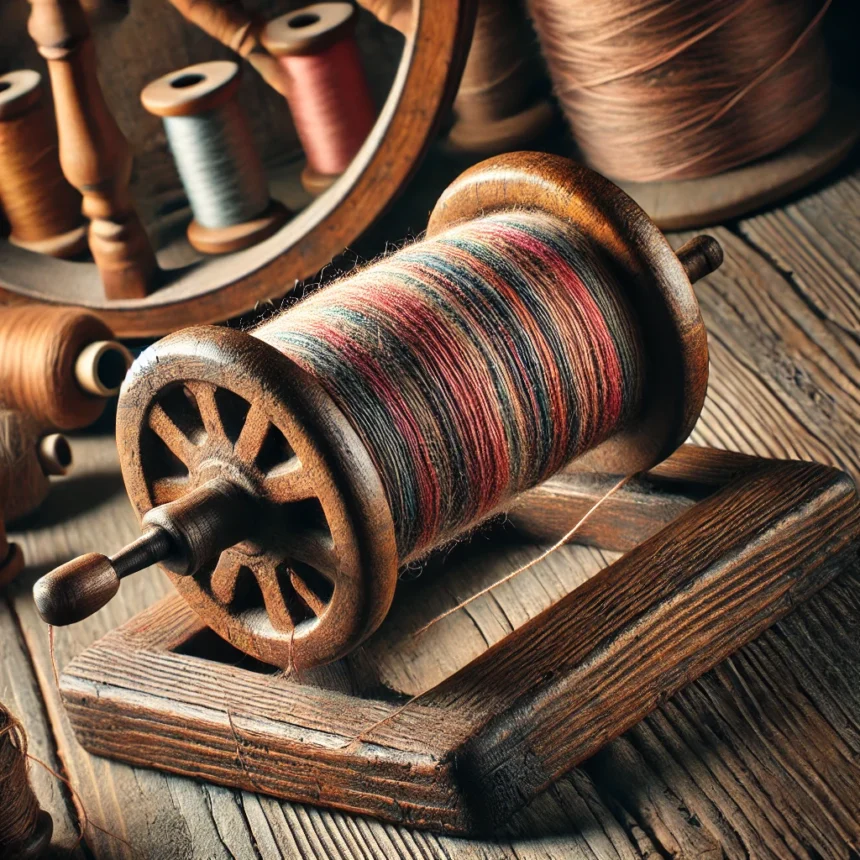What is Pirn?
At its core, a pirn is a type of bobbin used in the weaving process. It holds the weft yarn, which is inserted into the loom to create fabric. Pins come in different shapes and sizes depending on the loom or machine they are used with. These tools are essential in ensuring that the weaving process is smooth and efficient.
The pirn’s design allows it to fit into shuttle looms, which carry the yarn back and forth across the loom to interlace with warp threads. With a pirn, the weaving process would be much faster and more efficient. As technology has evolved, so has the design and efficiency of pirns, but their fundamental purpose remains the same.
The Importance of Pirn in the Textile Industry
The textile industry relies heavily on tools like prints to produce fabrics. Without pirn weaving would become more time-consuming and labor-intensive. Pirns help in holding large amounts of weft yarn and allow for smoother operations on looms.
The keyword “pirn” plays an essential role in textile manufacturing processes because it allows machines to operate more effectively. Weaving is a precise and intricate process, and prints help maintain the accuracy of thread placement. Whether in traditional weaving or more modern techniques, prints continue to be a crucial part of production.
Different Types of Pirn
Pins come in various forms, each designed for specific looms or machinery. Let’s take a closer look at the most common types of pirn used in the textile industry:
- Traditional Pirn
- The most basic form of pirn is used with shuttle looms. It is cylindrical and designed to hold the weft thread, allowing it to unroll easily as the loom moves back and forth.
- Automatic Pirn
- Modern weaving machines use automatic pirns. The design allows for quick loading and continuous weaving.
- Large Pirn
- They help reduce the frequency of replacing the pirn, which saves time in the weaving process.
- Plastic and Metal Pins
- Each type of material has its benefits. Plastic pirns are lightweight and cost-effective, while metal pirns are durable and last longer.
How Pirns Have Evolved Over Time
The use of pirns has evolved significantly over the years. Initially, pirns were handcrafted and required frequent replacement due to wear and tear. Today, pirns are manufactured using advanced machinery, ensuring greater durability and efficiency.
The textile industry’s modernization has seen a shift toward automatic looms, and with this, automatic prints have become more common. These pins are designed to allow looms to operate continuously without constant manual intervention, making the process much more efficient.
Moreover, materials used in making pirns have also evolved. This shift has made pirns more durable and versatile, capable of withstanding the demands of modern weaving techniques.
Why is Pirn Important in Weaving?
Pins hold the weft yarn, which is a critical component of the fabric-making process.
Additionally, pirns help improve the efficiency of looms. Since they hold large amounts of yarn, they reduce the number of times the weaver needs to stop to replace the weft. This increases productivity and reduces the likelihood of errors during the weaving process.
In summary, pirns are a small but essential part of weaving, ensuring that the yarn is held securely and released smoothly during the process.
Pirn Maintenance and Care
Like any tool, PIRNs require maintenance to function optimally. Proper care of pirns ensures that they last longer and continue to perform efficiently. Here are some essential tips for maintaining pirns:
- Regular Cleaning
- Dust and lint can accumulate on the pirns during the weaving process. It is necessary to clean them regularly to ensure that they continue to hold the yarn properly and do not cause any issues during weaving.
- Check for Wear and Tear
- Over time, prints can become worn or damaged. Regularly inspect pirns for signs of wear and replace them if necessary. A damaged pirn can lead to uneven weaving and frequent thread breakage.
- Storage
- Keeping them in a cool, dry place will help extend their lifespan.
Modern Uses of Pirn
While pirns are traditionally associated with the textile industry, they have found uses in other areas as well. Let’s take a look at some modern uses of pirns:
- Automated Weaving Machines
- As mentioned earlier, modern, automated weaving machines now use pirns.
- Embroidery Machines
- Some embroidery machines also use prints to hold thread. These pins are often smaller and more delicate but serve the same essential function of holding the thread securely.
- Crafting and DIY Projects
- They can hold various types of threads or yarns, making them a versatile tool for different applications.
- Textile Art Installations
- Artists use pirns to showcase different weaving techniques or simply as an aesthetic element in their designs.
How to Choose the Right Pirn for Your Loom
Choosing the right pirn is essential to ensure smooth weaving. The type of pirn you select depends on the loom you are using and the type of yarn. Here are a few tips to consider when selecting a pirn:
- Loom Compatibility
- Ensure that the print is compatible with your loom. Different looms require different types of prints, so it is essential to choose one that fits properly.
- Material
- Consider the material of the pirn. If you need a lightweight option, plastic prints may be the best choice. However, if durability is a priority, metal prints might be a better option.
- Size
- The size of the pirn is also important. Larger pins are ideal for holding more yarn, which reduces the frequency of replacement. However, smaller prints may be more appropriate for delicate weaving projects.
- Automatic vs. Manual
- If you are using an automatic loom, you will need an automatic pirn.
FAQs About Pirn
Q: What is the difference between a pirn and a bobbin?
A pirn specifically serves as a type of bobbin in shuttle looms, while a bobbin generally refers to any spool that holds thread or yarn.
Q: Can pirns be reused?
A:Regular maintenance ensures that they last longer.
Q: How do I know when to replace a pirn?
A: If the pirn shows signs of wear, such as cracking or uneven surfaces, it should be replaced to prevent issues during the weaving process.
Q: Are pirns used in hand-weaving?
A: Yes, pirns can be used in hand-weaving, particularly in traditional shuttle looms.
Q: What materials are pirns made from?
A: Pins can be made from various materials, including wood, plastic, and metal, depending on the specific use and loom requirements.
Conclusion
Pirns are a vital component of the weaving and textile industries. Their ability to hold weft yarn and improve the efficiency of looms makes them indispensable. Whether you’re working with traditional or modern weaving methods, prints ensure that the process runs smoothly.





